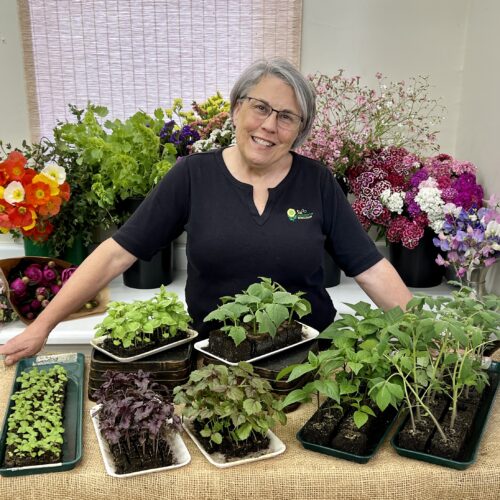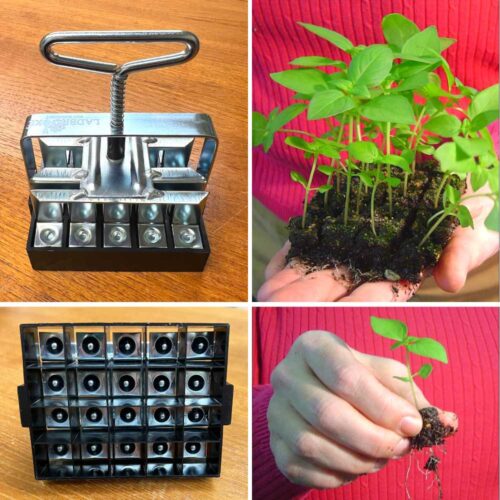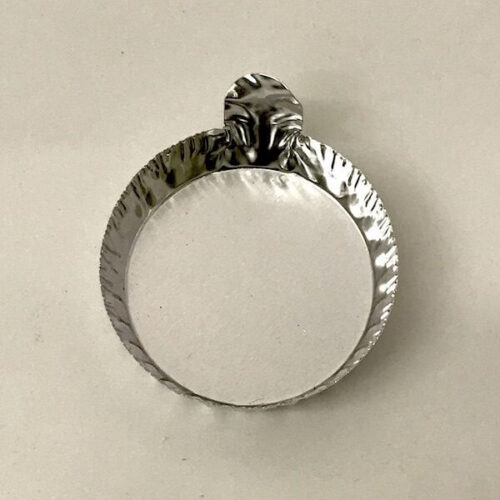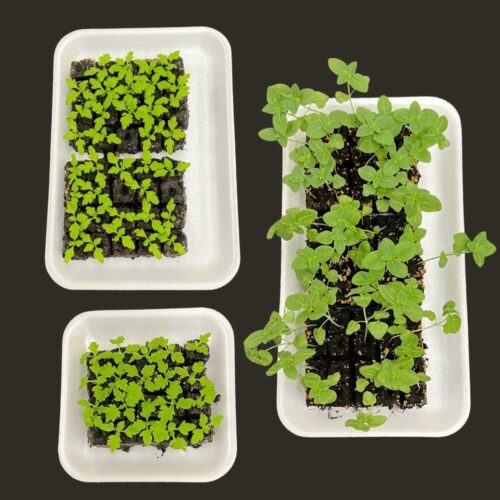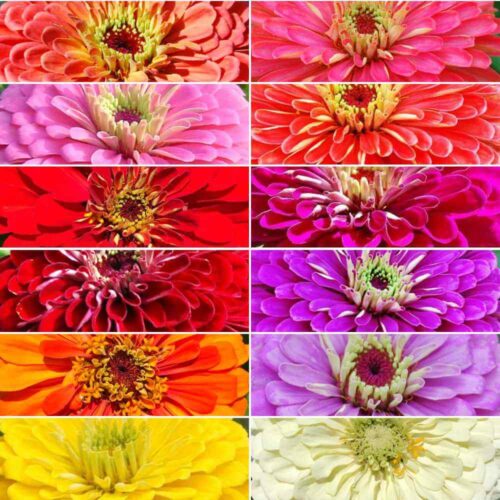Grandma’s Garden: Beans and Squash All Season
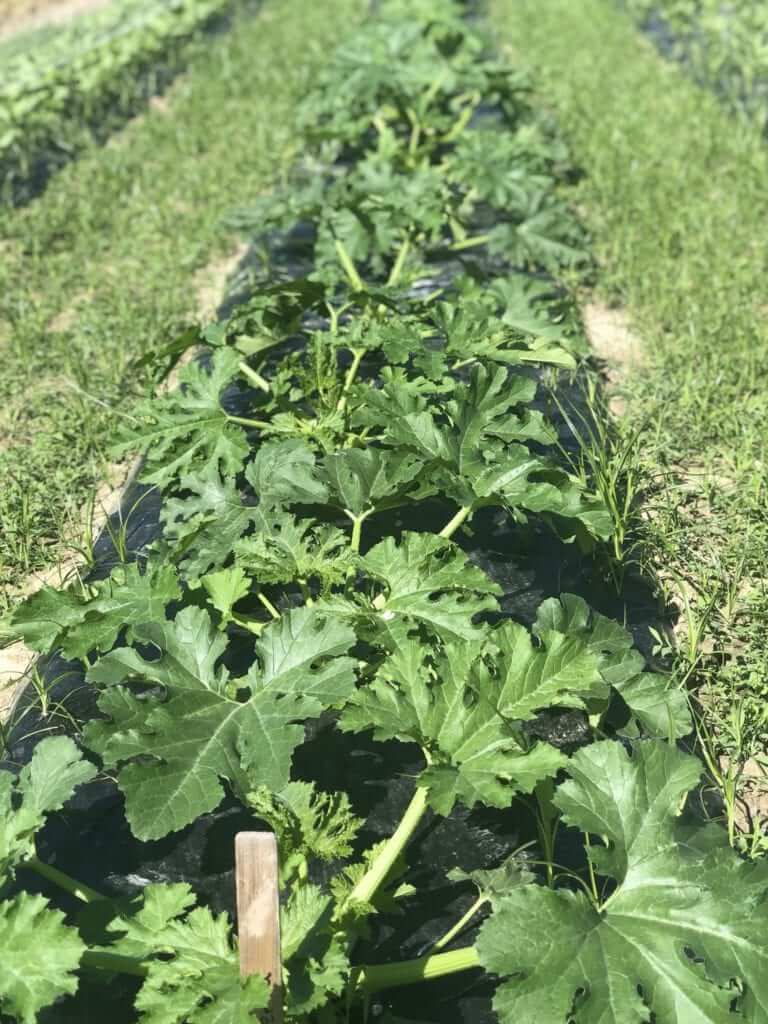
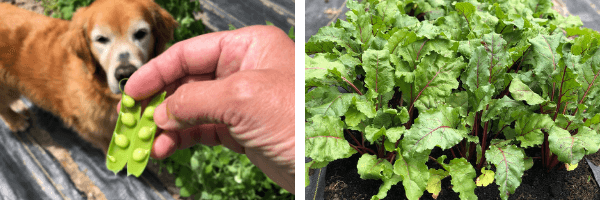
The cool-season veggie patch harvest keeps me busy until it’s time to plant the warm-season beans and squash.
Somehow each year, the official first warm-season planting season takes me by surprise. I attribute this to my totally involvement with growing cool-season plants. This cool-season group keeps me busy from late winter to spring and then BOOM– it’s time to plant the warm-season plants.
The warm-season plants would include squash, beans, tomatoes, and others plus a boatload of flowers. Managing to harvest the cool-season bounty while planting warm season has always been a challenge. Until this year that is…
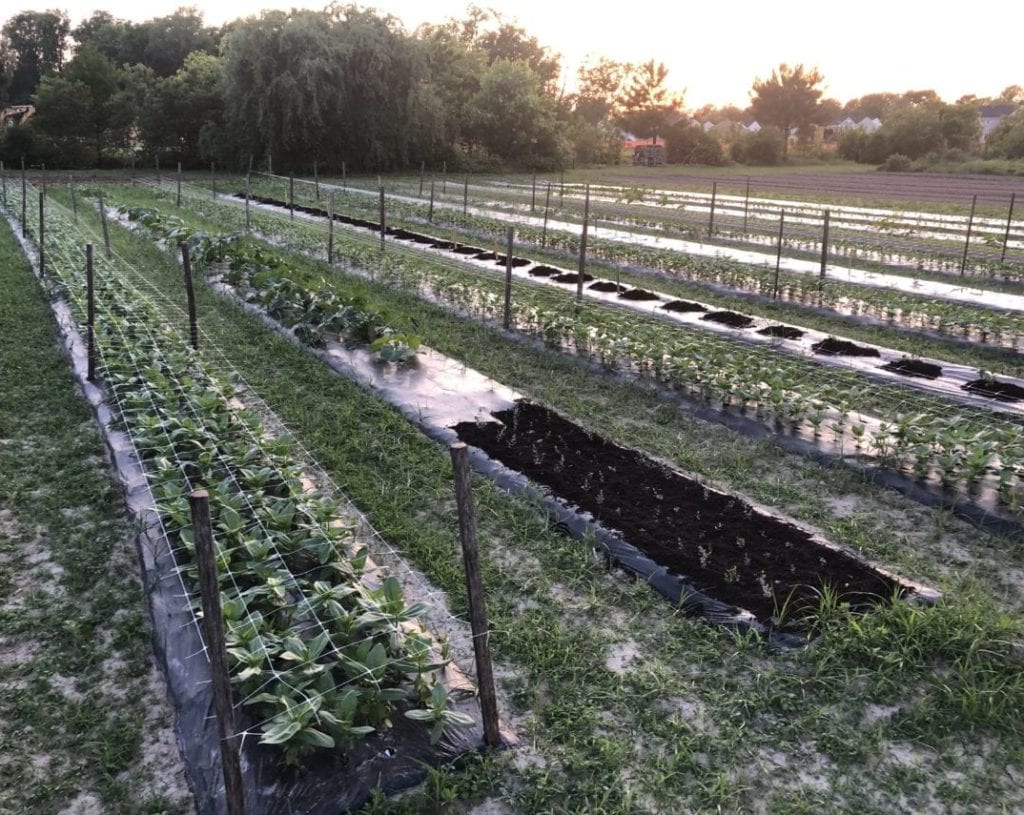
The first succession of warm-season vegetables and flowers are planted and on their way. Transplants were planted in the biodegradable film and flower support netting is installed.
If you caught my Lisa Live! broadcast “Confessions of a Flower Farmer” you know that because of my own operator error, I lost a good portion of my cool-season crops this spring. Kind of a brutal experience, but good things are coming from it. This blunder is allowing me to embrace the warm season in a way I haven’t for a couple of decades.
This season I’m bringing more vegetables back into the life of my farm. It’s actually where the Ziegler family homestead got its start and I’m heading back to our roots you might say. As my flower farming career grew the past 21 years years, frankly vegetables were squeezed down to a meager existence on this little urban farm.
I’ve found myself in this early May with our first succession planting of warm-season flowers and vegetable planted and I’m moving on. What’s next? The second succession of warm-season plants, just one of several to come. Beyond all the flowers and tomatoes in those succession plantings, there’s two staple crops I include: beans and squash.
Bush Beans
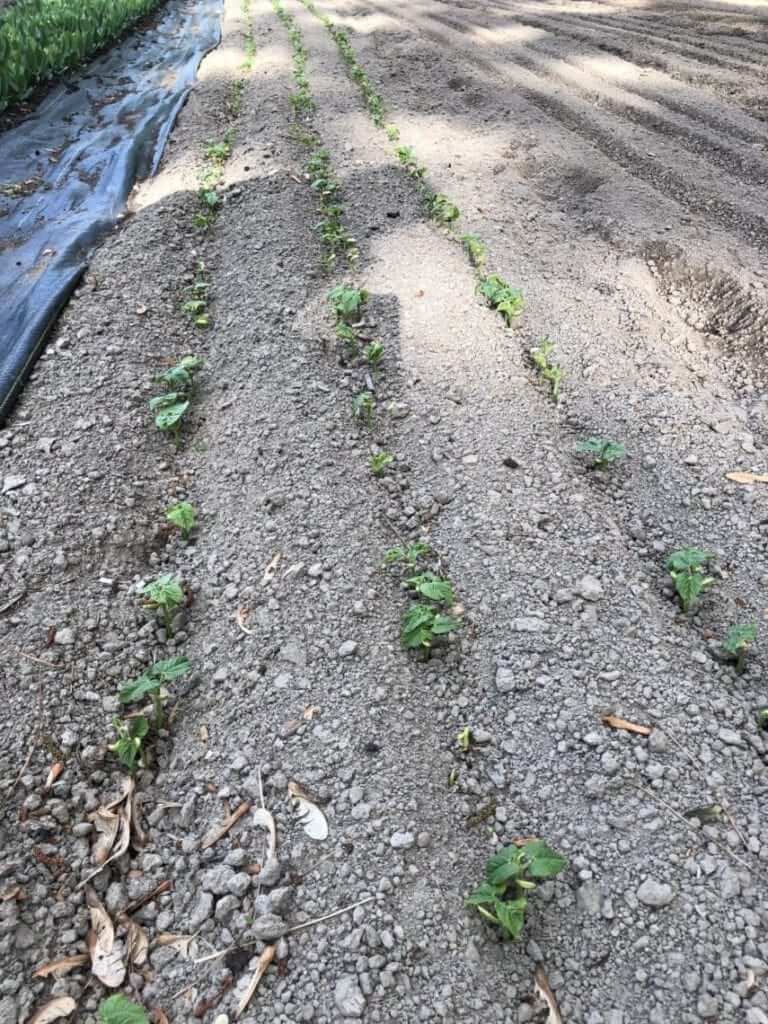
Bush bean seeds have just broken through the soil surface.
I plant the seeds of bush beans directly in the garden. Beans really like it warm and we are heading into their preferred weather. I planted a couple of beds just before the rain a few days ago and will plant two more beds in the next couple of weeks.
The beans planted later in the season will be covered with a floating row cover. This will protect the growing plants from beetle damage. The later in the season the plants are maturing the more likely to be attacked by beetles. The earlier planting typically escape the pest so I don’t cover.
The last plantings of beans will happen in late summer for what we call fall beans–thought to be the tastiest. Again the planting bed is covered to prevent beetle attacks.
The floating row cover is removed as harvest begins for convenience. Beans are self-pollinators that do not require pollination.
Squash
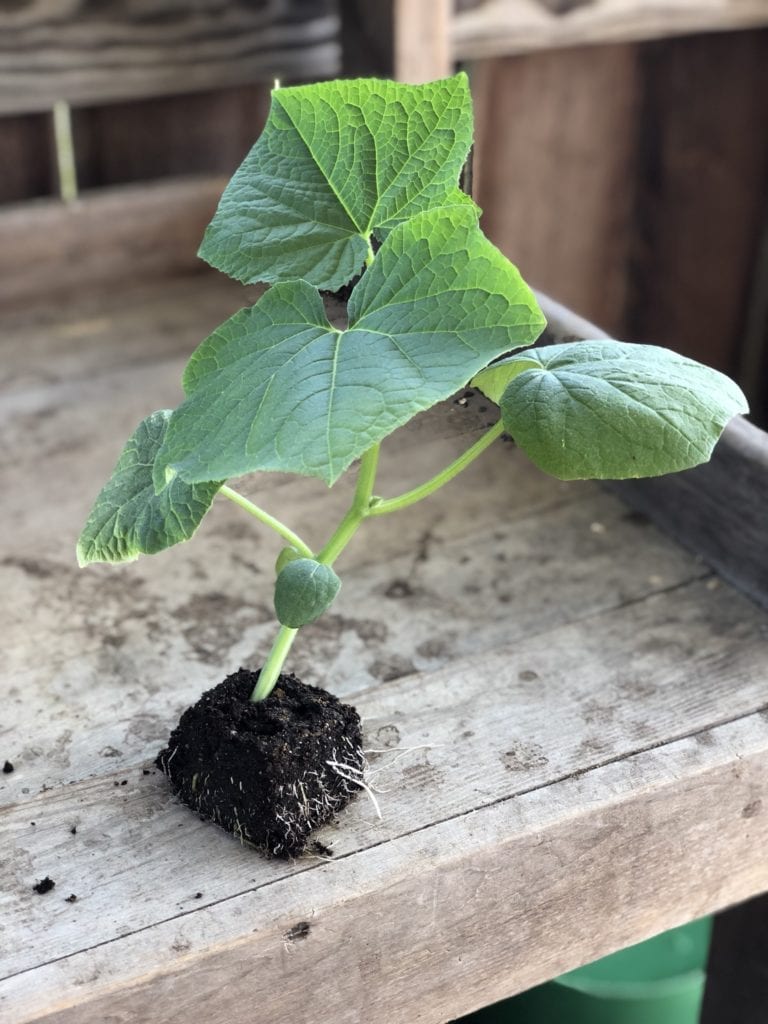
A two week old squash seedling in a 2″ soil block ready to be planted in the garden.
Squash seeds can be easily started indoors and or planted outdoors in the garden. I begin the season by starting seeds indoors and then to switch to planting seeds outdoors in the garden once the summer heats up.
A couple of weeks before the last expected spring frost date, I start squash seeds indoors in the 2” soil block. This gives a nice transplant to plant outdoors that will speed up the first harvest date.
I plant squash seeds directly into the garden once we are into the heat of summer. Seeds quickly sprout and grow in the garden especially when planted into the black biodegradable film.
Squash successions can be planted monthly up until about 60 days before the first fall frost depending on the days to harvest.
Like beans, I do not cover the first spring squash plantings with a floating row cover. But those later planting that mature while pests like the squash bug are more active, I cover the plantings immediately.
Squash requires pollination to produce. I remove the row cover once the plants begin blooming. If the squash bug attacks at this point, the plant is mature enough to bear fruit before succumbing to the pest.
The Insurance Policy:
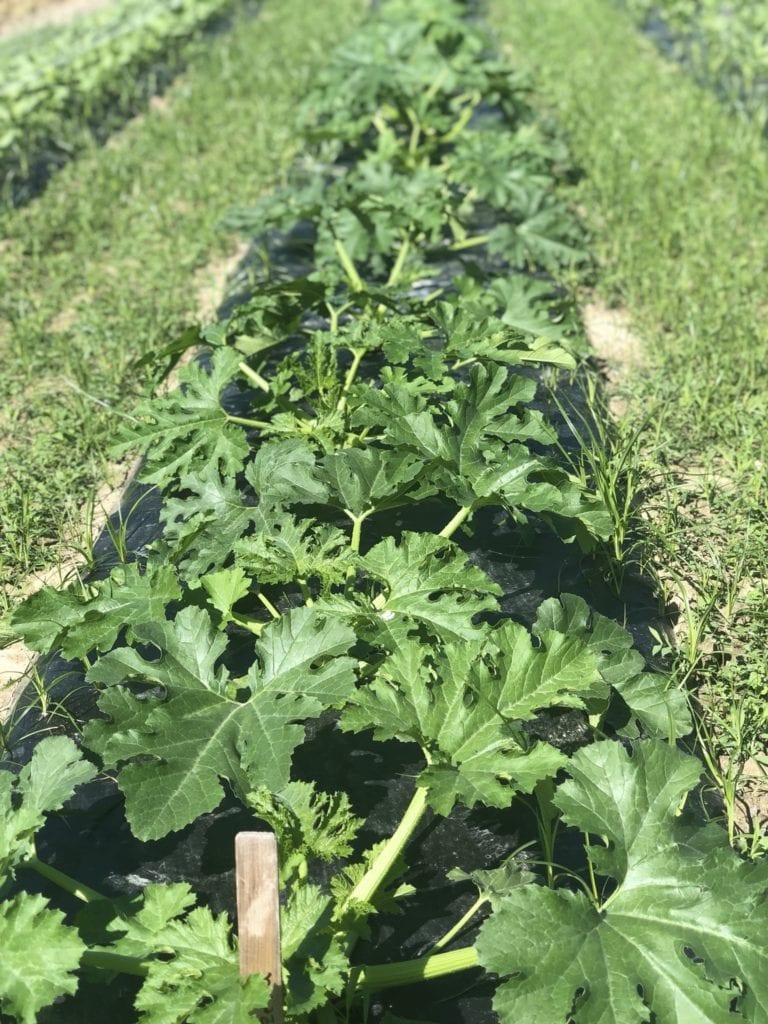
A bed of squash transplants growing in the black biodegradable film.
One of the sweetest benefits of succession plantings beyond spreading out the work and harvest: if a crop is lost to a pest there is another planting coming along. Another benefit: all those plantings allow trying and enjoying the many different varieties of beans and squash– both have many to choose from!
If you want to learn more ways to prevent pests, how flowers help with pests, and about successions plantings, read my book Vegetables Love Flowers.
Read more about what Grandma’s Garden vegetable project is all about and who’s helping with it here.
Need help starting seeds? My online course teaches how to start seeds outdoors in the garden and indoors using soil blocking. Seed Starting Made Easy, 90 minute course, $19.95. (Remember: when you purchase my courses you have unlimited access.)
Enjoy the bounty!
Lisa Z
Lisa Mason Ziegler is the founder of The Gardener’s Workshop and Flower Farming School Online . Author of Vegetables Love Flowers, Cool Flowers, and The Easy Cut-Flower Garden . Connect with Lisa on Facebook and Instagram !

